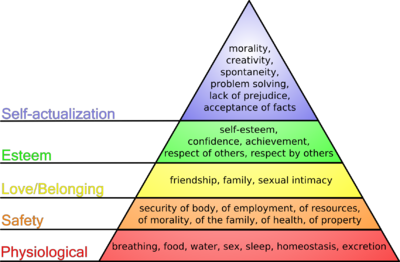It struck me the other day how well Maslow’s hierarchy of needs maps directly to many social game mechanics.

Maslow’s hierarchy was introduced in the 1940’s as a concept that people are motivated to satisfy basic needs before they build up to other needs. The lower level of the pyramid is built off of hygiene needs, such as health, food, water and sleep. After those conditions are satisfied, people’s needs progress up the five levels to emphasize psychological and social needs.
Levels of Maslow’s Hierarchy
- Self-actualizing needs — fulfillment of your true potential
- Esteem needs — personal worth, achievement, social recognition
- Social needs — belonging, love, affection
- Security needs — safety, survival, security
- Psychological needs — water, air, food, sleep
Game Mechanics and Maslow’s Hierarchy
The higher levels of this hierarchy seem to map to commonly discussed game mechanics. Level 3, social needs, loosely correlates to ideas around social grooming and reciprocity (gifts), competition, and loyalty. Esteem needs, level 2, has strong correlations to achievement, progression, status, leveling and ranking.
For the top-level, self-actualization, this is the role of grand narrative and storyline in games. This is the deeper purpose of games, and what Jane McGonical in her TED talk (transcript here) refers to as epic meaning. I’ll loosely quote her:
Gamers love to be attached to awe-inspiring missions to human planetary-scale stories. […] Gamers are super-empowered hopeful individuals. These are people who believe that they are individually capable of changing the world.
By immersing themselves in the reality and story of games, gamers are living and fulfilling their greater destinies as kings, gods and saviors to achieve an epic meaning.
When we play games, are we virtually reaching for self-actualization?